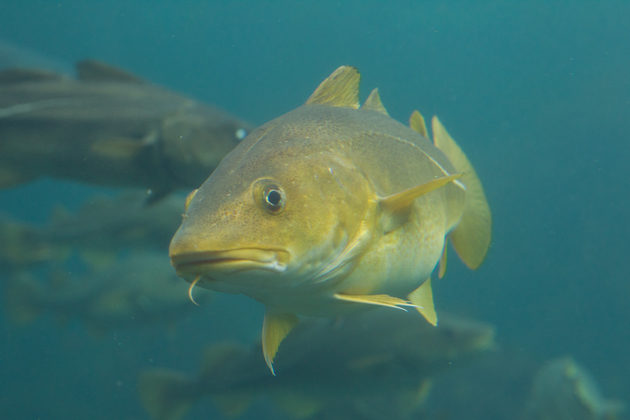Development of SNP array for cod

Existing genome sequence data is used to discover genomic SNP-variants and develop SNP-array specific for the Norwegian cod population. Use of the SNP-panel is demonstrated by analyzing data from the National Cod Breeding Program.
Start
01. Sep 2020
End
31. Mar 2022
Funded by
MABIT
Project Manager(s):
Other Participants:
Some results
Background
To support the competitiveness of the re-rising cod aquaculture industry, traditional family-based breeding efforts should be supplemented with state-of-the-art genomic tools that can be used for QTL (quantitative trait loci) search as well as GS (genomic selection).
Genomic selection allows within family selection with higher accuracy and selection intensity and thus higher genetic gain, and is especially valuable for traits that require large number of experimental animals (challenge tests, test slaughters).
Our project aimed at developing SNP-array suitable for high throughput genotyping for conducting high resolution genetic studies on Atlantic cod, and to be applied in breeding using genomic selection.
Goal
The development of SNP panel for Atlantic cod utilizing existing genome sequence data from the breeding population.
The use of the genomic tool will be demonstrated on already existing data (body composition, sexual maturation) from the National breeding program for Atlantic cod.
Subgoals
- Analyses of available sequence data for the detection of genome-wide distributed, high quality SNPs for the development of genomic tool for Atlantic cod.
- Estimation of genetic parameters based on genomic data and comparison of accuracy of prediction using genomic vs. pedigree information.
- Search for genes/loci affecting growth rate, body composition, with focus on liver weight and hepatosomatic index, through genome wide association studies (GWAS).
This is what we do
Available sequence data is used to discover genomic SNP variants, and develop SNP array (medium to high density) specific to Norwegian cod population which may further be used for genotyping and ultimately for GWAS and GS studies . We have the sequence data available on at least ~111 individuals, and individual specific sequence reads will be re-aligned to the latest available genome assembly (gadMor3.0, cod genome assembly v 1.94 was used previously) to discover and call SNPs.
We expect to discover ~3-4 million SNPs which will be filtered based on their e.g., MAF, informativeness, distribution in genome and linkage disequilibrium between SNPs. Selected SNPs are processed and final genomic tool (SNP genotyping array) for Atlantic cod industry is developed by external company. Phenotypic information from previously slaughtered and dissected family material (N=2560 from 218 families) of year-class 2016, and from sexual maturation experiment conducted on year-class 2019 family material (N= from 100 families) is used for demonstration how the developed tool can be used in the breeding work. The developed SNP based array is be used for genotyping a sample of ~2500 individuals divided between the two datasets.
Univariate and multivariate animal models are used to estimate genetic parameters (variance components, heritability, genetic correlations) for growth rate and body composition traits as well as early sexual maturation both using pedigree and genomic information.
We will examine advantage/potential of genomic over pedigree-based selection by comparing prediction accuracy obtained using genomic vs. pedigree-based information. Phenotypes from the same data will be used for GWAS to search for genes/loci affecting these traits through genome wide association studies.
Research facilities